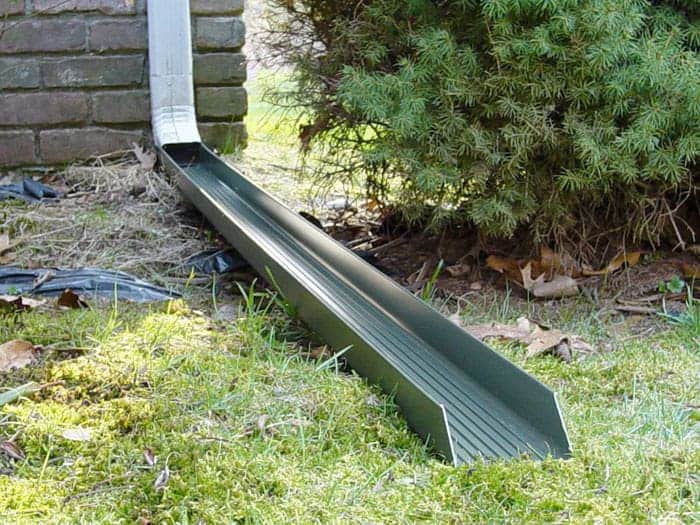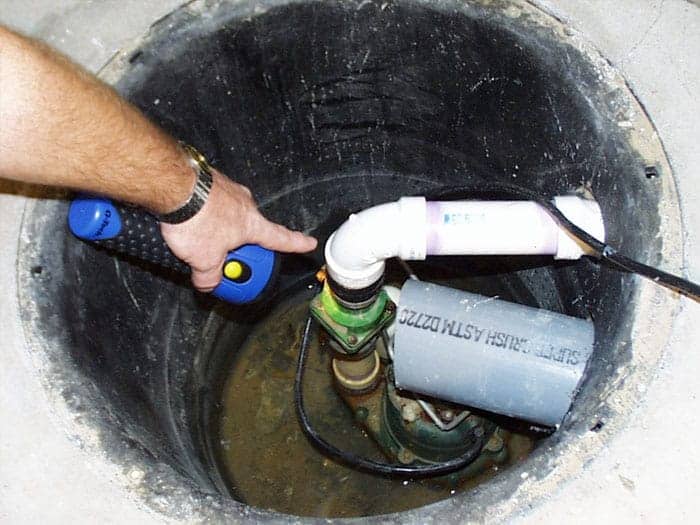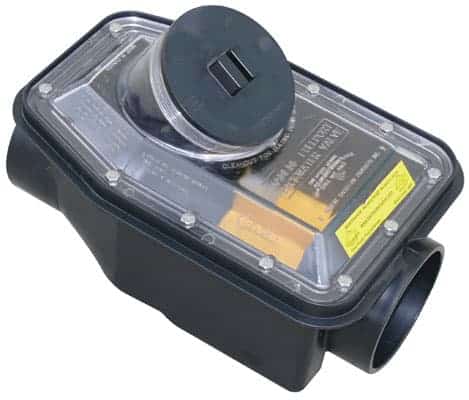Water and Sewer Services
Public Works ensures the delivery of a safe and reliable water distribution system.
Humboldt’s water is purchased from SaskWater’s Wakaw-Humboldt regional potable water system. This system supplies potable water to our community through a pipeline network from the South Saskatchewan River.

The City of Humboldt manages water and sewer services for the municipality. SaskPower provides electrical services, and SaskEnergy provides gas services to our community.
Fully-treated water is provided to the community by Saskatchewan Water Corporation, which draws the water from the South Saskatchewan River and distributes it to Humboldt and surrounding communities.
01.2024 Bylaw Amendment – 2024 Water and Sewer Rates Bylaw
To view our Utility Billing & Collections Policy, click here.
Our community enjoys a high quality of water and, every year, the City provides notification to consumers about the quality of water produced and supplied.
- 2023 Annual Customer Notification – Drinking Water Quality Compliance for the City of Humboldt
- 2023 SaskWater – Humboldt-Wakaw Water Quality Report
For more information about the City’s water and sewer services, view our Utilities page.
For more information about storm water management and available rebates, view our Incentive & Rebate Programs page.
Throughout 2023, the City of Humboldt took in $3,305,550.41 in waterworks revenue and spent $3,345,699.36 in expenses. This means 98.8% of the expenses were covered by the revenue, which came from water consumption and base rate sales, custom work, and penalties.
The expenses vary from salaries, waterworks buildings maintenance and utilities, to watermain repair, maintenance, and improvements. This is separate from sewers systems revenues and expenses.
Please note, pursuant to Section 54 of the Municipalities Regulations, the following information is available for inspection at the municipal office during regular office hours:
- Waterworks rate policy and capital investment strategy
- 2023 waterworks financial overview as per the above
- current reserves
- most recent waterworks independent engineering assessment
- capital plans for waterworks infrastructure projects and sources of funding
- all current agreements entered into by the municipality respecting the provision of municipal waterworks services.
Lead Water Line Policy and Rebate Application
In March 2019, Councl approved Policy #6700 – Lead Water Line Policy, that included a “Lead Replacement Incentive” for properties that are known to have, or found to have a lead service connectionon the homeowner’s side of the property line. The City will provide a payment to the property owner of $750.00 following proof of the replacement of that lead water service from the property line to the water meter.
Click here to view Policy #6700 – Lead Water Line Policy
Click here to view or download the “LEAD WATER SERVICE REPLACEMENT REIMURSEMENT APPLICA TION”.
If your neighbourhood was established prior to 1950 there could be lead within your home’s plumbing system. As a precaution, homeowners and occupants should be aware of how to reduce the risk of lead exposure from drinking water. You can reduce your exposure to lead from drinking water by following the steps below, or download this brochure from Health Canada, Drinking Water: What About Lead?”
Run your tap before you drink the water.
Lead can dissolve into your drinking water when it sits stagnant in household pipes. Flushing toilets, doing laundry, and running showers all help ensure your drinking water is fresh. If your water has not been used for at least 6 hours, run the cold water faucet for about five minutes before drinking or cooking.
This water does not have to be wasted – it is safe to use for cleaning or watering plants. Keep a container of drinking water in your refrigerator so you don’t have to run water every time you want a drink. Remember that boiling water does not remove lead.
Install a certified water filter
To reduce lead exposure as much as possible, especially for children under six and pregnant women, you may consider drinking water from an alternate source. Alternatively you may attach a National Sanitation Foundation (NSF) certified filter to a drinking water faucet, or using a certified filtered water pitcher. On the packaging, look for a stamp indicating “NSF-053” and a statement that indicates the filter is certified for lead removal, as some models can vary. These filters can reduce up to 99% of lead in water. Replace filters according to the manufacturer’s instructions.
Remove and clean your tap screen
Most household taps have an aerating screen attached to the end. Calcium carbonate can build up on the screen and absorb lead. Make it a habit to remove the screen and clean off any build up every month.
Modernize the plumbing system in your home
The most effective way to reduce lead levels in drinking water is to remove all lead sources from your plumbing system. Consider replacing pipes containing older lead solder, and brass fittings with materials certified for contact with drinking water. A licensed plumber can determine if your home has a lead service connection, and whether the home contains lead solder, lead pipes or lead pipe fittings.
Spring Thaw and Stormwater Tips
Stormwater that flows into the sewers from the surface (streets, yards, etc.) is referred to as stormwater. This includes snow melt, rain, and excess water from watering your lawn or garden.
Managing stormwater is necessary to control flooding and reduce impacts on people and property.
In several areas of Humboldt, old infrastructure construction (e.g. weeping tile systems) were built to drain stormwater directly into the sanitary sewer system. However, as per City Bylaw 21/2010, stormwater drainage must be directed outside and into the separate system that contains stormwater only.
Draining into the sanitary sewer, a system not designed to accommodate excess water, may result in sewer back-ups as well as contribute to flooding in instances of extreme weather.
To address this, the City is doing its part by continuing to upgrade its stormwater systems, such as:
- The upgrading of two lift station pumps and force mains;
- Installing superpipes to hold excess sanitary sewer water;
- Creating a stormwater detention pond in St. Elizabeth’s Park;
- Installing a major drainage pipeline along east 11th Avenue;
- Designing additional stormwater detention in Centennial Park; and
- Planning for future stormwater improvements.
Help do your part by:
- Installing a sump pump system and directing sump pump drainage outside;
- Installing and regularly maintaining a backwater valve to help prevent sewer back-ups;
- Ensuring your home’s weeping tile system directs drainage outside;
- Ensuring downspouts direct water away from your property;
- Keeping gutters free of debris; and
- Making sure surface water from your lot is drained to side yards or towards the street.
Managing our community’s stormwater is everyone’s responsibility.



Photos L-R: Downspout drain; backwater valve; sump pump.
Preparing for Spring Melt:
Help protect your property from water issues each spring:
- Shovel snow away from your house
- Inspect your property for possible obstructions that prevent water from flowing away from your home
- Ensure your sump pump is in good working condition and your outside drain line is clear
- If you have a backwater valve, check that it is clear and in good working order
- Check to make sure your gutters are clear so melting snow can drain properly
- Ensure your downspouts drain water several feet away from your home’s foundation
Doing the above helps protect your home, your neighbour’s home and your neighbourhood from potential water issues such as seepage, flooding and back-ups.
Additional Resources:
Guides:
- Handbook for Reducing Basement Flooding, Institute for Catastrophic Loss Reduction
Illustrations and Diagrams:
Check out these resources for more information about preventative plumbing and responsible stormwater management:
- Proper Retrofit Sump Pump to Drain Connection
- Proper Sump Pump Connection in New Construction
- Improper Weeping Tile to Drain
- Improper Sump Pump to Drain
Informational Videos:
Water Distribution Plant Upgrades
The City of Humboldt’s Water Distribution Plant, located at 1201 Main Street, received some upgrades in 2016. These upgrades included replacement of piping and electronics within the station as well as an additional reservoir for increased water capacity. The upgrades were completed in 2017.
The upgrades were done to help accommodate the growing population of Humboldt and surrounding area. The project was partially funded by the Federal and Provincial Governments’ New Building Canada Fund – Small Communities Fund.
The Public Works and Utilities Department set up a camera to record the work while it was being done. Take a look at the video below, showing early-stage construction.
Sign up for Water eBilling
